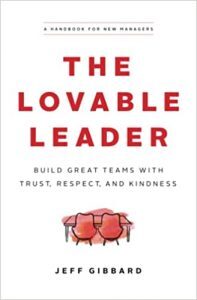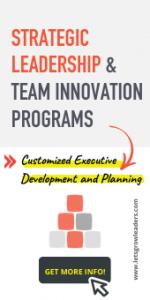David Dye's Blog, page 44
September 23, 2022
Loveable Leadership with Jeff Gibbard
When your team thinks of you as a leader, is your leadership loveable? The lovable leader knows that all people are capable of extraordinary things, that obstacles can empower you instead of limit you, and that your abilities combined with your choices give everyone you lead opportunities for greatness.
For too long leadership has been defined by the bottom line, at the expense of the humans leading and being led. Obviously, results matter but now more than ever, leaders need to be more than a boss wielding the authority of a title to produce results. Leaders need to be lovable. In this episode author, speaker, and strategist Jeff Gibbard offers an invaluable set of practical skills that will inspire people to follow you, make your organization a better place to work, and might just change the broken culture of work.
The Loveable Leader05:40 What’s the definition of a lovable leader?11:22 What are the different leadership archetypes?13:36 What is it like to work for me? Ask questions, be curious and think about what type of leader you wanna be.14:06 Leadership is your responsibility, burden, and privilege.20:40 What are the three pillars of lovable leadership?25:26 There are different ways to show care as a leader such as being curious about what people on your team care about, acknowledging people for their wins and validating them in their time of losses, and standing up for them.30:56 In terms of building trust, what is a practical thing we can do to validate rather than judge?34:32 Our job as leaders often is to solve problems or to help people solve their own problems. If we have people who are guarded if we’re judging, instead of validating, they’re gonna be defensive.36:36 Becoming a lovable leader doesn’t mean you have to change anything about what you’re doing in terms of getting work done. You’re just changing how we interact with one another.39:33 Productive conflict as a forcing of a resolution or achieving an outcome.
53:56 Practical ways to take care of yourself as a lovable leader.Connect with Jeff
Get the Book
The post Loveable Leadership with Jeff Gibbard appeared first on Let's Grow Leaders.
September 19, 2022
How to Say No at Work: Powerful Phrases to Stand Your Ground
It’s never easy to say no at work. After all, you want to be helpful, responsive, and a team player. And yet, every time you say “yes” to something or someone, you’re saying “no” to something or someone else.
When you tell your boss, “Yes, I will work late tonight,” you might have to tell your daughter, “No, I can’t come to your tee-ball game.”
Or, when you tell a co-worker, “Yes, I can take on this new client.” You might also be saying, “No, I won’t be able to launch that new product this month.”
When you tell a customer, sure, “I’ll expedite your request.” You might also realize you just committed to skipping your standard quality checks.
“Yes, my team can do that for you,” might mean, “I’m going to have to postpone our team’s strategic planning offsite... again.”
How to Say No at WorkGround yourself in confidence and humilitySay yes to what’s most importantKnow when your “know” means you should say noSay a hard no to ethics and values violationsYes, you can even say no to your boss1. Ground Yourself in Confident HumilityIn our leadership programs, we always recommend facing difficult conversations with confidence and humility.
Confidence Sentence Starters:
I’ve studied this problem extensively. Here’s what I know…My experience tells me we should go in another direction.I’m confident that we should take a different approach, here’s why…Humble Sentence Starters:
I’ve got some strong opinions on this, but I’m curious about what you think.I have concerns, and my inclination is to say no. But first, I’m open to your perspective.What else do I need to know before I say no?2. Say Yes to What’s Most ImportantThe most powerful way to gain the confidence to say no at work is to be crystal clear about what matters most. We call these your Most Important Things, or MITs.
When you’re clear about what matters most, you can reframe your “no” as a yes to the bigger picture.
“Yes… And”As David Dye shares in, How to Help Your Team Say No at Work, one way to do this is by affirming the request and the value the request might represent—that’s the “yes.” Then bridge to the context, consequences, and decisions—that’s the “and.”
Other powerful phrases to say yes… andFor example, “Yes, it sounds like this project would benefit our marketing strategy. And, at the moment, the team is cranking hard to meet our customer’s finish line for the new product development. I can certainly prioritize this new marketing project if we can shift the product deadline. Or, we could get this new one done after the product wraps up. My preference would be to finish up with the product so we can give this our full attention. What do you think makes the most sense?”
Here are a few other examples of saying no at work, while saying a respectful yes to the person and the work they’re doing.
I’m sorry I can’t get give you the exact support you’ve requested. What I can do is ______ (insert your “yes” here, for example, recommend another resource; meet with you for an hour to review your approach; or remove a roadblock).I can see how excited you are about this initiative, that’s awesome. I wish I could help. I’ve got to stay focused on ______ (insert your MIT here).Wow, I’m impressed with all you’re doing. I just don’t have the bandwidth to help with this right now.Thank you so much for thinking of me! I’m honored. I’m so sorry I can’t say yes to this right now.Exciting! We really have a lot going on right now. I’m going to have to pass on this opportunity right now so I can focus on _____.3. Know When Your “Know” Means You Should Say No at WorkThis is a bit more tricky. In our Courageous Cultures research, 67% of employees said their manager operates around the notion of “this is the way we’ve always done it.”
So, if you’re the boss (or an expert), how do you know if you are stuck in your ways as opposed to saying no for important and justified reasons based on your expertise?
First, Respond With Regard through gratitude, information, and an invitation to keep contributing.
Thank you so much for your suggestion. Here’s some additional information you might not be aware of. Considering that, I wonder what additional ideas you might have?That idea would be really interesting if we were planning to expand our leadership training programs to include training llamas. But for now, our focus is training humans on human-centered leadership.That idea is so fun! And, it would clearly violate _________(this law, compliance, brand standards)….I wonder what ideas you have that could accomplish something similar within those requirements?That’s interesting. Have you considered ____ (add additional information here).Thank you for thinking about this. However, this clearly is ______ (illegal, out of compliance, against this foundational policy). Let’s think a level deeper about the outcome you’re looking for, and how we might get there.4. Say a Hard “No” to Values Clashes and Ethics ViolationsI’m not sure who said this first, but sometimes “no is a complete sentence”.
If someone is asking you to do something unethical, immoral, or illegal, a hard no may be in order.
That’s a hard no because _________.This doesn’t feel right to me, let’s call ________ (legal, HR, compliance).That doesn’t sit right with me ethically.Nope, can’t do that, it’s a clear violation of our code of conduct.No. That’s completely inappropriate for you to ask me to do that.5. And, Yes, You Can Even Say “No” to Your BossYou may think, “great these ‘how to say no at work’ phrases might work well for a coworker, but it’s much harder to say no to my boss!”
I get it. And, yet some variations of the above phrases can work, even with your boss.
Again, start with what you can say yes to…
I’m deeply committed to the success of the team and to this project. What you’re asking me to do here would mean _______. Which concerns me because of ________. An alternative approach might be____.This project sounds so exciting. And at the moment, I can’t take on another thing—unless we re-prioritize my current work. Can we set up some one-on-one time to talk about all I have on my plate and where my contribution will have the biggest impact?I really want to support you on this, but my gut says we shouldn’t do it. Perhaps we should run this by _______ (HR, Legal, Compliance).You know I’m always looking to stretch and grow. I want to contribute all I can to this company and continue to stretch and grow. I don’t think I’m the best fit for the role you’re suggesting because…Saying no at work isn’t always easy. But when you can stay focused on the bigger yes, you’ll gain respect and accomplish more with less frustration.
Your TurnWhat are your favorite phrases for saying no at work?
Related Articles:Managing Up With Grace: How to Give Your Boss Better Feedback
How Do I Deal with a Manipulative Boss?
How to Convince Your Boss You Have a Great Solution
Share Your Ideas: Practical Ways to Ensure Your Voice is Heard
The post How to Say No at Work: Powerful Phrases to Stand Your Ground appeared first on Let's Grow Leaders.
September 17, 2022
Leadership Vulnerability: How do I Do This Well? (Video)
Karin, I know I get that leadership vulnerability and transparency really make a difference in building trust. And, you know what? IT’S HARD! How do I get okay with it? Where do I start? Does it really matter? What if it backfires?” #AskingforaFriend
These are “Asking for a Friend” questions I receive after almost every keynote.
Today’s guest is my husband and business partner David Dye.
He recently published a book of essays called, Tomorrow Together: Essays of Hope, Healing, and Humanity.
His book is filled with meaningful, personal stories that will make you think, laugh, and possibly cry. His stories are meant to inspire hope. And, encourage your courage.
David Dye on Leadership Vulnerability

 Tomorrow Together, is a deeply moving collection of personal essays of healing and hope for humanity.
Tomorrow Together, is a deeply moving collection of personal essays of healing and hope for humanity.
The twenty-first century hasn’t started the way many expected. We confront a potent mix of global pandemic, global warming, the resurgence of authoritarianism, white nationalism, and war that once again threatens to consume the planet. It can feel frustrating and hopeless.
But there is hope for humanity. We have the resources, and wisdom, and most importantly: we have one another. Forty-two short essays that highlight moments of wonder, beauty, and connection.
Related Articles:Managerial Courage: 7 Ways to Be a Bit More Daring
How I Learned the Importance of Being an Authentic Leader (also includes a video)
Authentic Leadership: 5 Big Mistakes That Can Derail Your Influence
David and I would love to hear your stories too. What’s been a moment of hope or inspiration for you?
The post Leadership Vulnerability: How do I Do This Well? (Video) appeared first on Let's Grow Leaders.
September 16, 2022
What Leaders Need to Know About AI with Kavita Ganesan
Do you want to take advantage of artificial intelligence but are not sure where to start? The process can feel overwhelming—from analyzing existing processes and software systems and choosing where to apply AI automation, to preparing every tier of the organization for the transition.
In this episode, Kavita Ganesan, author of The Business Case For AI, takes the mystery out of implementing AI, sharing how to launch AI initiatives that get results. With real-world AI examples to spark your own ideas, you’ll learn how to identify high-impact AI opportunities, prepare for AI transitions, and measure your AI performance.
What Leaders Need to Know About AI14:39 Why should human-centered leaders care about artificial intelligence?
16:32 AI Systems are here to make us a lot more productive. Ideally, they are going to help us to be more efficient and more effective.
16:39 What are we talking about with artificial intelligence? In the book, you define it but help our listeners. When you’re discussing artificial intelligence what exactly is that?
20:11 If you teach an AI system an algorithm to complete a specific task, it’s going to do that extremely accurately, even more accurately than humans. But it doesn’t have the common sense, reasoning, and abstract thinking that humans have. So if it fails on a particular task, it’s not going to know how to resolve that issue. That’s where humans come in, and we need to help the AI system resolve the issues that the AI system cannot resolve.
24:28 Let’s discuss some other myths that you address in the book that are important for anyone who is either working with AI, relying on it, or thinking about implementing it. And why mistakes should be expected.
27:44 Why AI doesn’t eliminate bias.
31:00 Is it also a myth that sophistication is always superior?
33:55 When when we’re thinking about how artificial intelligence can improve our business processes and decision-making, what are some ways we can be thinking about using it to its best effect?
34:35 Using Artificial Intelligence to optimize decisions making and improve the efficiency of business processes.
45:50 Understanding the short-term and long-term benefits, and the metrics to measure the system before its development.
Connect with Kavita
Get the Book
The post What Leaders Need to Know About AI with Kavita Ganesan appeared first on Let's Grow Leaders.
September 12, 2022
Don’t Get Lost or Hurt: The Vital Role of Leadership Strategy and Tactics
When you don’t pay enough attention to strategy, you and your team end up lost in a wilderness of meaningless, unproductive busyness. However, when you don’t pay attention to tactics and effective management, you create needless conflicts, frustrations and hurt feelings. When you embrace effective leadership strategy and tactics, they’ll work together to help you, your teams, and organization thrive.
Leaders and managers often struggle with the difference between strategy and tactics or vision and operations. But they are both vital to your success and don’t have to be complicated.
The Danger of Focusing Only on StrategyThis weekend I went for a long trail run. The terrain was rocky with roots snaking across the trail. I kept a close eye on the ground and placed my feet carefully. Then I caught up with two women on the trail ahead of me.
I called out a friendly “passing on your left” and as they moved over to allow me to pass, I focused on the trail ahead where I would pass them, and I sped up.
And that’s when one of those roots caught my foot and I tripped, falling down in an inglorious pile of dirt, blood, and embarrassment.
In looking at the trail ahead, I lost focus on the ground beneath my feet.
That’s the danger of focusing on strategy or vision (the trail ahead) to the exclusion of the operational and management realities you face today (the ground beneath your feet).

The trail demanded attention
Tactical Questions to Help You Avoid “Injury”Operational tactics (looking at the ground beneath your feet) include clear communication, a shared understanding of success, healthy professional relationships, and consistent accountability.
When you lack these elements, your team will experience the “injuries” of frequent conflicts, frustrations, and misunderstandings that derail productivity and quench morale. Here are several vital questions to help focus on the tactical aspect of leadership strategy and tactics:
Does everyone know what success looks like?Does everyone know what specific behaviors are critical to achieving that success?Have you checked for understanding to ensure everyone has the same understanding?Are you consistently communicating critical messages and concepts five times, five different ways?Do you schedule the finish with clear discussions and mutual appointments to conclude tasks and projects?Do you and your team hold one another accountable for commitments?Do you acknowledge and celebrate success?Does your team know how to discuss and resolve day-to-day conflict, dropped balls, and misunderstandings?For more on these critical leadership questions and competencies, check out Leadership Skills: 6 Competencies You Can’t Lead Without
To help your team with tough conversations, check out How to Provide More Meaningful Performance Feedback
The Danger of Focusing Only on TacticsBack to the trail…I got up, brushed myself off, and continued to run. Twelve miles later I took a new trail I’d never explored. I was determined not to fall again, so I watched the ground closely.
When I reached the end of the new trail, I turned around, confident I’d counted the number of branching trails I’d passed and that I could get back easily. But I was tired, hadn’t looked at a map, and I’d been watching the ground so closely that I hadn’t paid enough attention to my surroundings. I took a wrong turn and I was lost.
In looking at the ground beneath my feet, I’d lost track of where I was and where to go.
That’s the danger of focusing on tactics and operations (the ground beneath your feet) to the exclusion of strategy and vision (the map and the trail ahead).

Lost and Wandering
Strategic Questions to Help you Avoid Getting “Lost”Strategic clarity and vision (looking at the map and the trail ahead) include understanding the big picture, why you’re doing what you’re doing, and how your team’s work contributes to the whole. In addition, a shared vision (picture of where you’re going and what it will feel like to get there) inspires and energizes your team.
When you lack these elements, your team will get “lost” in business. Their work might be precise and done well, but it’s not meaningful—it doesn’t move the team or outcomes forward. This type of meaningless work saps morale and wastes precious time and energy. Here are several questions to help avoid getting lost in unproductive work as you focus on the first element of leadership strategy and tactics:
Why do we do this?And ask again, up to five times… why do we do this?What is our organization or team’s purpose?Do we have a shared vision of success for our team? (What does it look like, feel like, and what is happening when we are at our best, doing our best work?)How does our work contribute to the bigger picture? (That bigger picture can be your customer, the organization, or society beyond the business.)What is changing in the world, our industry, technology, employees, or our customers so that we can understand and respond?How will our customers, client, or world be better because of the work we do?For more on connecting your team to the “why” in your work, check out Strategic Planning Tool: How to Engage Your Team in Better Conversation
To create more clarity and ensure everyone understands what matters most: Creating Clarity: Strategic Activities For Human Centered Leaders
To help your team make these connections and build a foundation for high performance: How to Build a High-Performing Team: Ten Vital Conversations
Resolving the Tension Between Leadership Strategy and TacticsMany leaders and teams get into arguments and conflict as they struggle with the need to “look at the map” and focus “on the ground beneath their feet.”
The reason for many of these disagreements is that most of us have a natural tendency to focus on one direction or the other. Some people are natural visionaries, looking at the horizon, seeing into tomorrow, and inspiring people to come on the journey with them. Other people are naturally good at operations and ensuring everyone is on the same page, connected with one another, and doing their work well.
Obviously, you need both for any team or organization to do meaningful work and make a difference. What is obvious and self-evident for you will not be so clear for your colleague with a different gift.
In most discussions, the best way to resolve the tension between leadership strategy and tactics is to start with strategy. Where are we going? Why are we going there? How will we and our customer/client be better off as a result?
Once you’ve clarified the strategic goal, then focus on how you will achieve it and the leadership practices that help the team operate smoothly.
In your own leadership, commit to a weekly habit of strategy and tactics. If you’re strong tactically, schedule time at the beginning or end of the week to re-examine why you’re doing the work you’re doing and ensure it aligns with the big picture.
If you’re strong strategically, ask the tactical questions and ensure you haven’t let communication or accountability lapse while you’ve looked at the horizon.
Leadership Strategy and Tactics – Your TurnA mutual focus on leadership strategy and tactics helps you and your team do motivating, meaningful work without morale-sapping frustration.
I’d love to hear from you: how do you balance leadership strategy and tactics, ensuring you don’t lose focus on one or the other?

Transform your management style, while building team trust.
The post Don’t Get Lost or Hurt: The Vital Role of Leadership Strategy and Tactics appeared first on Let's Grow Leaders.
September 10, 2022
How Do I Deal with a Manipulative Boss?
“What do I do if my boss is a “gamer” manager–the kind of manipulative boss you talk about in your book Winning Well)? This dude is not really focused on results or relationships. I feel like a pawn. What should I do? #AskingforaFriend”
This is a question we get quite frequently from people reading our book: Winning Well: A Manager’s Guide To Getting Results– Without Losing Your Soul.

Today, I offer a few thoughts. Have you ever worked for someone like this? What would you add?
1. Whatever you do, don’t get sucked into the gaming, manipulative boss vortex.First, don’t become a manipulative manager yourself. You have a long career to consider. It’s very important that you maintain the credibility of your own brand.
2. Focus on creating a “cultural oasis.“Next, be sure that everyone you lead and influence is being led well. Show up with confidence and humility, focused on results and relationships.
Be deliberate in building trust: up, down, and sideways.
3. Build a strong network of mentors and peer relationships,And, surround yourself with people who will help you continue to grow. Get the support you need to stay true to your values.
What would you add?
What advice do you have for someone who has a manipulative boss, “gamer” boss?
#leadershipdevelopment #leadership #badbosses #courageouscultures David Dye Let’s Grow Leaders Jared Herr
Note: This was filmed at the King’s Road in Ireland on a pre-pandemic trip speaking at the Project Management Institute Global conference.
This question continues to come up so frequently, that I thought it was time to gather additional insights.
More “Asking for a Friend” Answers on Managing UpManaging Up With Grace (How to Give Your Boss Better Feedback With Video)
The post How Do I Deal with a Manipulative Boss? appeared first on Let's Grow Leaders.
September 9, 2022
Confidence vs Arrogance
What’s the difference between confidence vs arrogance? When I was young, a mountain trail gave me an early lesson between confidence and arrogance. This is an excerpt from from my latest book Tomorrow Together: Essays of Hope, Healing, and Humanity.
Hey, it’s David and you’re listening to leadership without losing your soul, your source for practical leadership, inspiration tools, and strategies you can use to achieve transformational results without sacrificing your humanity or your mind in the process.
When I was young, a mountain trail gave me an early lesson between confidence and arrogance. It was labor day weekend, my freshman year of high school. My friend Mike asked if I wanted to hike a fourteener with him in Colorado. Fourteener refers to the tallest mountain peaks. Those that rise above 14,000 feet, hence the name, and Colorado boasts 53 of those peaks. 58 if you use a more generous definition. Hiking them is a pastime for many Colorado outdoor enthusiasts. But up to that point in my life, I had never done it.
Now a key feature of hiking these peaks is you have to start early. You get up at 4:00 AM, grab breakfast, drive, and arrive at the Trailhead by 6:00 AM or even earlier. You start early to get up and back down the mountain quickly before afternoon lightning storms come up. So I waited in the dark, outside my house for Mike and his mom to pick me up. I wore brand new hiking boots and a pair of blue floral print shorts that my mom had sewn for me. Thanks, mom.
We arrived at Mount Bierstadt trailhead and started hiking just before sunrise. There was a re-crust of ice lining the edge of the mountain stream, and icy do drops weighing down the Willow branches. So you can picture it was cold. And the Willows, the trail winds through acres of shrubby Willow bogs before climbing up the Stony peak, and the soil in those bogs was wet and soft in places.
In the middle of the trail, we came upon a churned-up muddy stretch. It looked like the muck would be soft and slimy during the day. But right now, early in the morning, the frosty mountain had frozen the mud, and the dark ice looked cold and solid. Nevertheless, Mike, his mom, and my friend, Matt walked around the mud. Not me. I had new boots, strong boots, boots that wouldn’t mind a little mud. After all, isn’t that what boots are made for?
So I boldly stepped on the ice-encrusted mud and sank up to my waist.
Confidence vs ArroganceMy friends tried to pull me out, but the cold wet slime created a vacuum. And as they pulled, I could feel my feet sliding out of my boots. Ultimately, my friends found several long branches and were able to wedge them down by my feet, working around and moving aside enough mud that it released the vacuum that had threatened to steal my boots off my feet.
When my friends hauled me out of the mud, my hand-sewn blue floral shorts, weren’t blue anymore. Sorry, mom. By the end of the day, the dried crusty mud covering my legs, infiltrating my socks, and chafing between my toes was the start of a valuable lesson to check my arrogance vs confidence and that the mountain always wins.
It’s a lesson I’d learned more deeply as I became familiar with these peaks. I mentioned that you start early so that you’re well off the summit by noon. That’s when the lightning storms begin. The storms come up suddenly because the sun warms the exposed Rocky peaks, the heat radiates from the stones into the surrounding atmosphere, which warms and rises in a column. The rising mass meets cooler air and the, as the rising air cools moisture condenses, forming clouds and all of that energy and moving air creates electricity.
One time I was on my way down the mountain well before noon, but not before an electrified cloud swirled up and sleet pelted us. A woman with longer hair found it standing straight up. People stopped for pictures. I hike with collapsible metal walking poles and as I swung the pole forward the air around it audibly crackled with energy. That’s a good way to get killed. We ran down the mountain and were lucky.
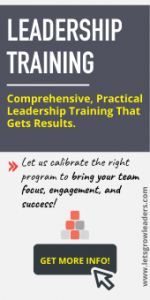
The mountain always wins. You may have prepared for an ascent for months and hiked for the better part of a day, but if a storm comes up there’s only one healthy choice. Turn around.
There’s a difference between confident grit, resiliency, and arrogance. The former helps us to push through our self-imposed barriers, understand our potential, and stand on new heights we may never have imagined.
Arrogance is a failure to understand ourselves and our environment, and to confront the hard facts. I love the mountains because they are such potent teachers. They draw out grit, build confidence, and reward resiliency, but you cannot cheat the mountain.
The mountain always wins.
Get the BookThe post Confidence vs Arrogance appeared first on Let's Grow Leaders.
September 5, 2022
How to Build a High-Performing Team: Ten Vital Conversations
Every truly high-performing team has one thing in common: They spend time in candid conversation talking about what’s working and consistently look for ways to improve. They look at the work they’re doing and ask “how can we” do this EVEN BETTER?
And they enjoy and celebrate their success.
And yet, when you’re neck deep in urgent deadlines, fast pivots, and navigating uncertainty and change, it’s easy to postpone those vital conversations to “someday when we have more time.” And of course, that someday may never come. Or, that conversation gets lost in the sauce of all the other important conversations at your end-of-year offsite.
But what if you carved out an hour a month to have the most critical conversations to lead your team toward high performance? Here are ten important questions to start with when building a high-performing team. What would you add?
10 Vital Conversations to Build a High-Performing TeamWhat is our vision for a great team culture?How do we better leverage the strengths of every team member?How do we best communicate?What are our most important strategic priorities (and how do we best achieve them)?How can we build deeper trust and connection?How do we enhance the effectiveness of our meetings?What can we do to give more meaningful feedback?How will we hold one another accountable (with compassion)?How will we celebrate success and learn from mistakes?What ideas do we have to improve our team’s performance? 1. What is our team vision for a great team culture?
1. What is our team vision for a great team culture?If you are really looking to build a high-performing team, the most important place to start is with a clear definition of success.
An easy way to do this is to invite everyone on your team to draw two pictures: one of the team as they see it now, and one as they would like it to be. Discuss the themes and approaches for getting to your desired state.
Or, you can go a level deeper and involve your team in defining key values and behaviors critical for your team’s success. See How to Build a Great Team Culture.
2. How do we better leverage the strengths of every team member?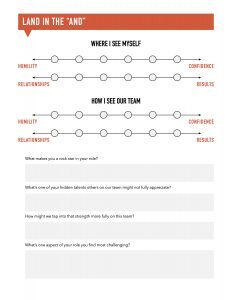
Click on the image to download our “Land in the AND tool.
Another characteristic of a truly high-performing team is that they truly understand the strengths and gifts each member brings. They encourage confident-humility and focus on results and relationships.
Team members know their strengths, own them and use them. And, they know and admit their vulnerabilities and ask for help.
If you’re looking to help your team “land in the and” of confidence and humility AND results and relationships, click on the image to the right to download this free high-performing team conversation tool.
3. How do we best communicate?Our clients tell us that one reason our leadership programs lead to sustained culture change is that everyone adopts a common vocabulary.
High-performing teams have a habit of “checking for understanding” to ensure key messages are received and “scheduling the finish” to ensure everyone is aligned on what “done” looks like.
4. What are our most important strategic priorities (and how do we best achieve them)?If you’re a regular reader of our blog or books, you know we’re all about the MIT (Most Important Thing). One of the biggest differentiators of high-performing teams is that they have real clarity about what success looks like, and the critical behaviors to achieve them.
One of the most important one-hour investments you can make is to talk about your MITs and how you will achieve them. This Creating Clarity article gives you a clear road-map to do that well.
5. How can build deeper trust and connection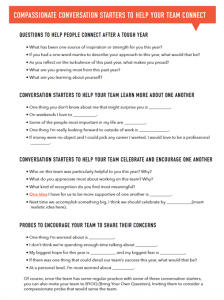
click to download conversations starters.
Trust starts with connection. Sure, building trust takes more than an hour, but it can start by having deeper conversations. Our B.E.C.O.M.E. model is a good place to start, as are compassionate conversations starters. Click on the image to the right to download those conversation starters to use with your team.
6. How do we enhance the effectiveness of our meetings?When should you have a meeting? Who should be included? Which meetings make sense? Which needs to go? How can you enhance your asynchronous communication to eliminate meetings and help level the playing field for remote team members across different time zones?
How will you make decisions in these meetings? We’ve been helping so many teams have these important conversations. And, it’s pretty amazing the progress that can be made in an hour.
7. What can we do to give more meaningful feedback?Another characteristic of high-performing teams is that they “ditch the diaper genie” and have important, candid conversations that will help one another to grow and improve. And, it’s important to set the stage for this 360 feedback upfront.
8. How will we hold one another accountable (with compassion)?It’s easy to think about accountability as your job as the manager. But the truth is, the highest-performing teams hold one another accountable.
It’s worth an hour to not only talk about shared accountability but also to give your team a practical tool to do that well. Our I.N.S.P.I.R.E. method is a good start.
9. How will we celebrate success and learn from our mistakes?High-performing teams take time to celebrate success and learn from their mistakes. They look down the mountain and see how far they’ve come. They make plans about how to celebrate and when it’s most important. And, they master the art of post-project celebrations.
10. What ideas do we have to improve our team’s performance?Okay, if you’ve been following any of our research or writing on Courageous Cultures (download the first few chapters of our latest book for FREE here), you knew this was coming. High-performing teams have strong psychological safety and encourage one another to share their ideas.
This conversation can start with a well-spent hour. Of course, to continue to build a truly high-performing team, we also encourage you to build this into your regular meeting cadence and one-on-ones.
Introducing the Let’s Grow Leaders Team Accelerator Program!Imagine if you had a structured, scaffolded way to easily hold these critical conversations for building a high-performing team. That’s why we’ve built our new Team Accelerator Program. In just one hour a month, you have the framework and support tools you need to hold these conversations with confidence.
Your team will become more connected, efficient, and focused on what matters most.
Contact us today at info@letsgrowleaders.com to schedule a demo of this practical approach to building a high-performing team.
Your turn: What conversations do you think are most important when building a high-performing team?The post How to Build a High-Performing Team: Ten Vital Conversations appeared first on Let's Grow Leaders.
September 3, 2022
Remote Team Culture: How to Improve Collaboration
One of the biggest challenges we’re hearing from managers leading remote and hybrid teams is how to build a better remote team culture. Specifically, “how can I help my remote team to collaborate AS IF we’re in the SAME ROOM?”
I feel this too on our own team. We recently got together for an in-person strategic offsite with some of our Let’s Grow Leaders team. About 20 minutes in, I stopped the conversation and said “THIS. THIS! How do we COLLABORATE MORE LIKE THIS? How can we make our remote team culture feel like THIS (even when we’re not in the same room)?
We’ve been helping teams have this conversation about their remote team culture in three steps.
Be Intentional as You Build Your Remote Team Culture

To work together AS IF we were all in the same room. This includes:
Spontaneous communicationBetter brainstorming and ideas.Sharing best practices.Asking for (and providing help to one another)Being genuinely interested, learning about, and caring for one another as human beings.This would mean that…
☼ People know what they need to know when they need to know it
☼ We use our meeting time strategically— and have space in our days to pick up the phone and talk to one another or walk down the hall
☼ We help our teams navigate change and stay motivated through uncertainty and change
☼ We care about one another and have some fun along the way
As the leader, you can set the vision. Or, you can use this team visioning exercise to help your team define it together.
2. Have a conversation about practical, specific norms the team can agree to, to turn that vision into reality.These are standards the team agrees to uphold in their remote or hybrid team.
For example:
We…
Prioritize our mental and physical healthHave candid conversationsEnsure every meeting has an agenda3. And then, come up with concrete I.D.E.A.s to achieve that vision and protect those norms.We’re finding our “Own the U.G.L.Y. and I.D.E.A.” processes work really well to generate ideas to build better remote team culture quite quickly. Learn more about those tools here.
I’d love to hear from you. What are your best I.D.E.A.s and best practices to build a better remote team culture? How do you help remote and hybrid teams collaborate and build trust “as if they’re in the same room?” How are you having these conversations?
The post Remote Team Culture: How to Improve Collaboration appeared first on Let's Grow Leaders.
September 2, 2022
Changing Your Mind
When you think about changing perception when was the last time that you changed your mind about something? Have you seen the images that have been coming from the new James Webb telescope? Changing our perceptions of outer space and what’s millions and billions of light years away from us. It’s fantastic.
Hey, it’s David and you’re listening to Leadership Without Losing Your Soul. Your source for practical leadership, inspiration tools, and strategies you can use to achieve transformational results without sacrificing your humanity or your mind in the process.
Changing Your MindI remember the first time I changed my mind about something and it’s something I share in my latest book Tomorrow Together: Essays of Hope, Healing, and Humanity. I want to share one with you, a story of growing up in Southwest Denver. Late in the day as the sun would settle toward the mountains west of the city, I loved to see downtown Denver highlighted in the evening light. My favorite version of this view happened after a summer thunderstorm that correlated steely gray and white skyline clothed with hope against the dark purple clouds that had taken their wrath out on the planes.
When I was 12 years old, my friend’s mother invited us to volunteer with her at her job. We drove there on a cold December morning. We rode in the back of a pickup truck, lying down flat as we could to stay out of the cold bitter wind. When we arrived, I sat up and the world shifted my skyline. That familiar arrangement of glass and steel had been put in a cloth bag, shaken, and poured out. This wasn’t my downtown.
We were Northeast of the city center directly opposite where I’d grown up. The buildings were foreign, strange, and discomforting, not at all the view that I knew and trusted. But then another thought hit me, there were children who grew up in this neighborhood, these alien buildings that made me uncomfortable, where their familiar anchored.
Recently, I shared that experience with one of my childhood friends who told me that by the time they were 12 they lived with four different orientations in downtown Denver. They never had the same notion that it could be a fixed point.
That’s a new perspective for me. There’s always another perspective. So getting back to outer space, when you think of the constellation Orion with starry belt and sword raised in the night sky for thousands of years from here on earth, it’s a random smattering of stars to our neighbors at the other end of the galaxy.
I’ve relived that moment of shifted perspective hundreds of times. As my known world expands, there’s always another perspective. And as strange, unsettling, and foreign as it may seem, how important it is to remember that this is the only normal another person has ever known.
The post Changing Your Mind appeared first on Let's Grow Leaders.

